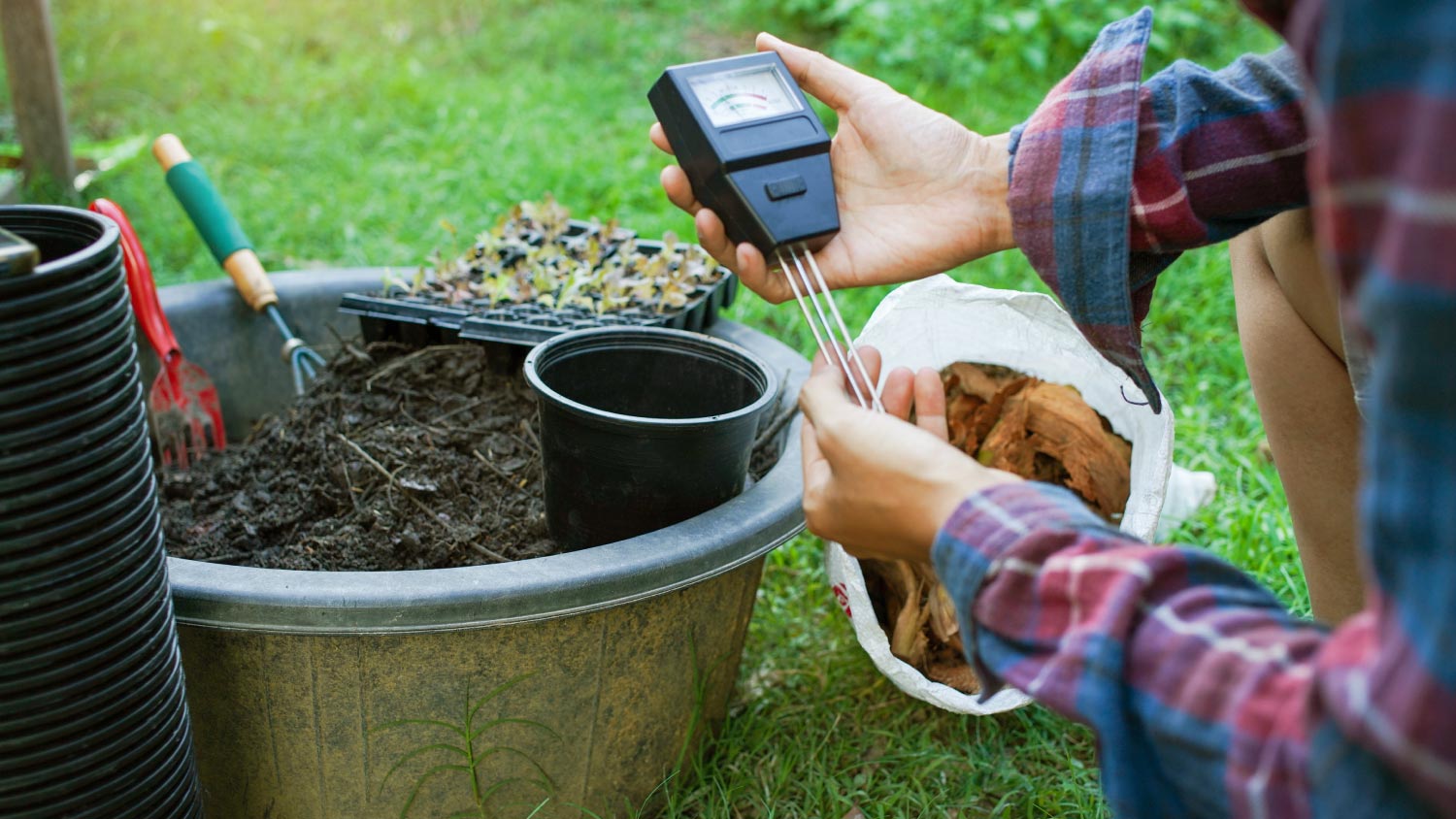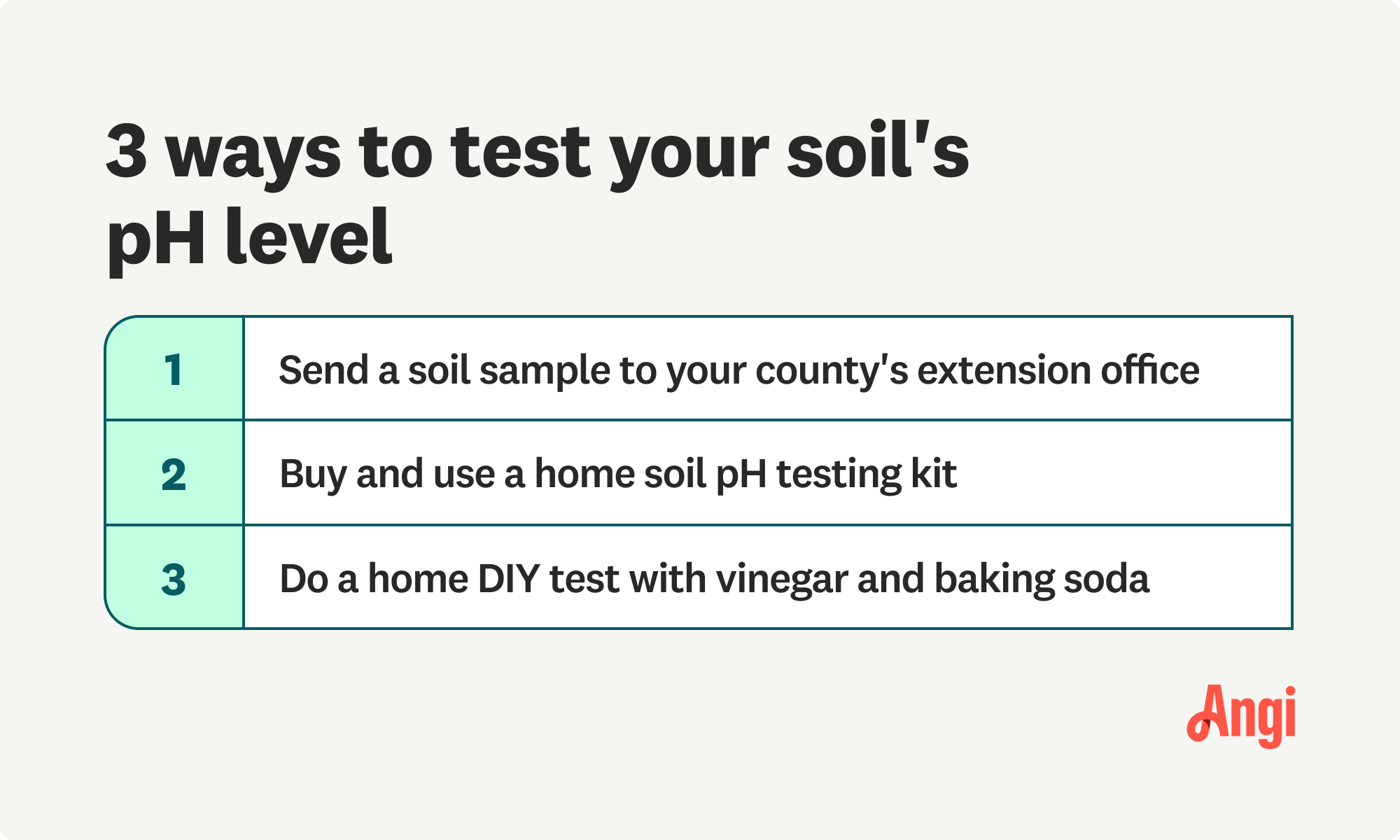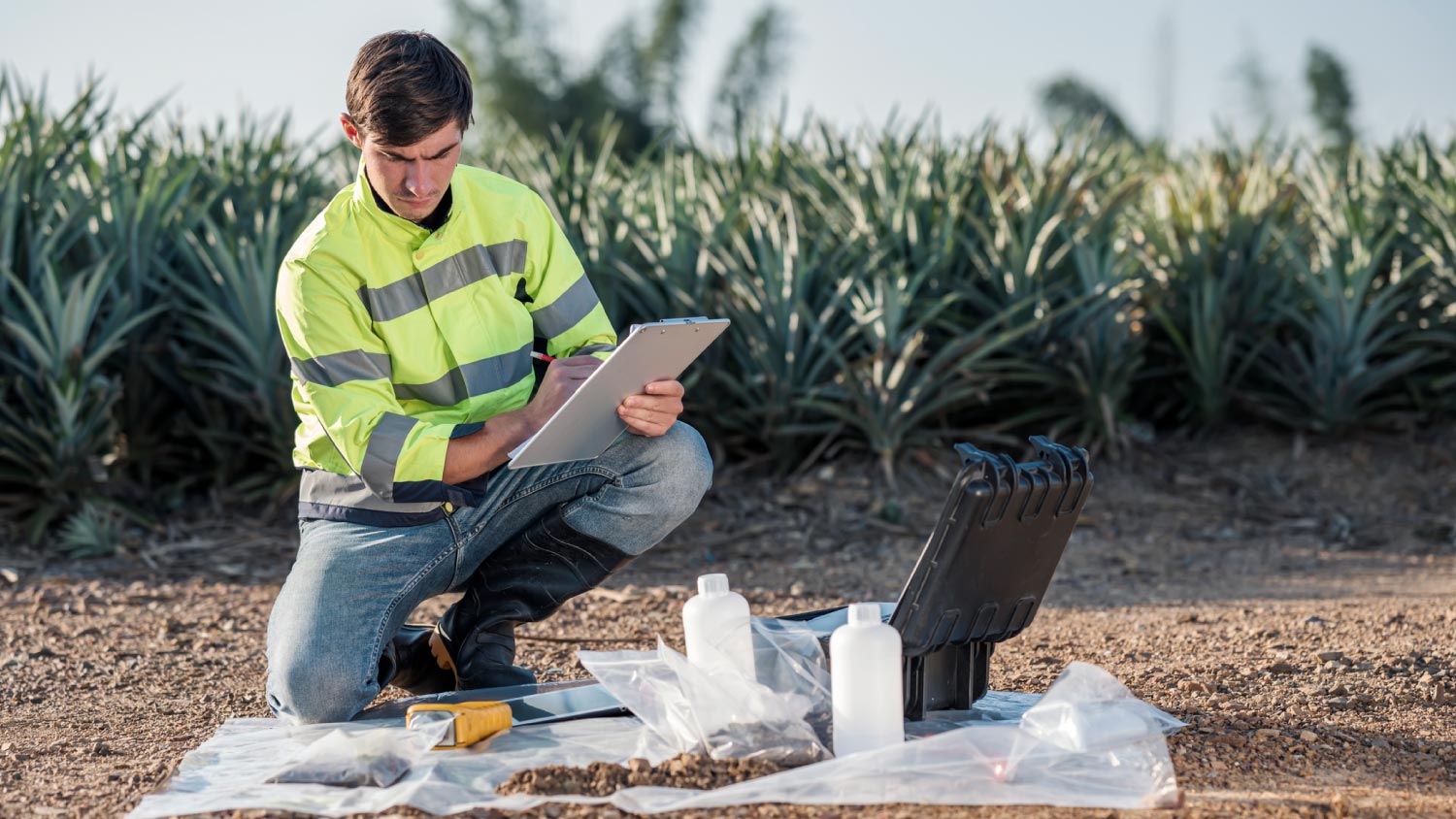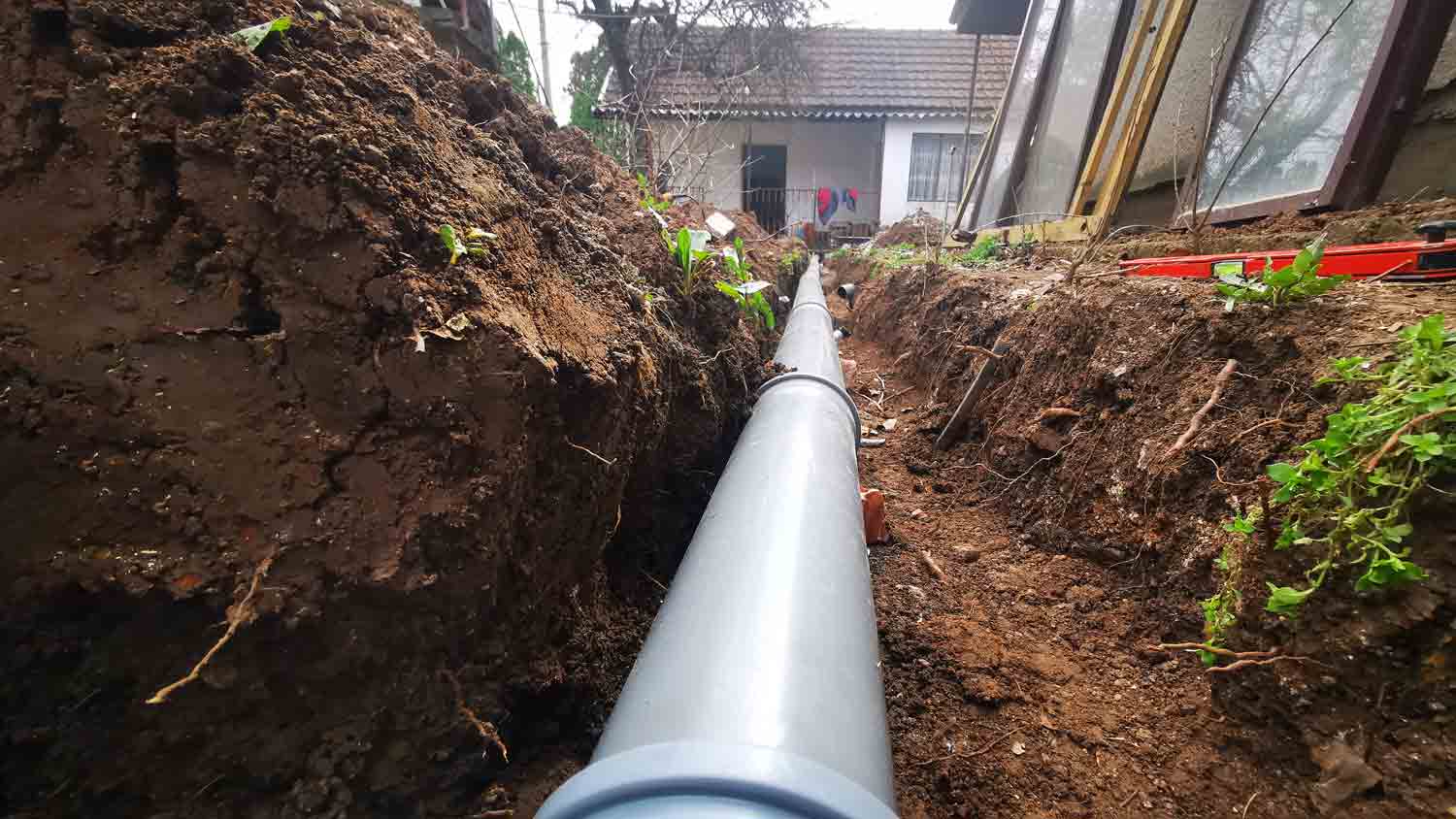
A landscape designer can elevate your outdoor space and bring your vision to life. Use this landscape design cost guide to budget for your next project.
A healthy lawn is a happy lawn


Many blame a not-so-green thumb for their difficulty growing plants and lush grass, but as it turns out, your soil pH could be the issue. Soil pH affects both nutrient absorption and chemical availability in the dirt, adversely affecting anything you try to plant.
In this guide, learn how to test soil pH using three different methods and the benefits of each to help you pick which is right for you.

Home soil testing kits cost as little as $15, and the DIY methods listed below may even be free to you if you have the ingredients on hand. Testing your soil pH regularly helps you establish a baseline. Retesting every two to three years is advisable.
Although you can take soil samples any time of year, fall is generally considered the best time to measure the pH of soil. This gives you several months during the winter to come up with and execute a game plan for maintaining lawn health or fixing any issues you come across.
For example, phosphorus in soil is needed for strong root growth. Potassium is essential for water absorption in cell membranes. Purchasing one of the more expensive soil testing kits can tell you exactly what your soil is deficient in, giving you insights to help fix the issue going forward.
There are three ways you can test the pH of your soil:
Have your soil tested by your local county's extension office.
Buy a home soil testing kit.
Do a DIY soil pH test.
Local county office tests may be basic in the sense that they'll grade your soil on a scale of "fair" to "good" (for example). Home soil testing kits range in price; the more expensive ones provide more accurate and detailed information and are probably your best bet if you really want to learn the ins and outs of your soil. A DIY test is a low-cost—or even free—way to understand your soil's pH.
Soil pH testing kits cost anywhere from $15 to $120, depending on the extent of data you're hoping to mine from the test. More expensive kits might also be curated for your specific type of lawn, such as lawns with clay beneath the surface or soils located in hot or humid climates.

Here's how to determine the right soil testing pH method for you, then execute your plan.

If you're using a soil testing kit, the instructions will likely ask you to:
Dig a small hole
Add water to the hole to form a muddy paste
Place your test strip in the muddy paste
Allow it to sit for several minutes, per instructions. At that point, you should have results.
If you're using the homemade option, remove any surface matter like twigs, leaves, or grass, then dig a 2- to 4-inch deep hole. Remove half a cup of dirt, then add half a cup of vinegar to one mason jar or glass and a scoop of baking soda to the other. Mix each jar equally with dirt (and half a cup of water to the baking soda). Stir well.
If the vinegar jar fizzes, your dirt is acidic.
If your water-baking soda jar fizzes, your dirt is alkaline.
If no reaction takes place, or you aren't really sure, that's a sign that your soil is well-balanced.
Here’s a general overview of how to send in a soil test:
Put your soil test sample in a heavy-duty plastic bag with a zipper.
Label the bag clearly with a permanent marker and seal it.
Place this bag inside of another for added security and seal it.
Put the bag inside of a sturdy box and fill it with bubble wrap.
Tape securely.
Take to the shipping company of your choice.

While you test your soil's pH, you might also consider running other tests or research projects, such as determining which types of weeds grow in your yard.
At the very least, take a mental note or diagram the problem areas in your yard, so you know what to monitor after you make corrections, such as where you need to add fertilizer to your lawn.

With more than one option available, checking soil pH DIY shouldn't be too much of a stretch for most homeowners.
Hiring a pro might be warranted, though, if you've been testing and trying to fix your soil without results. A local soil testing company can give you comprehensive results that can help inform your decision and balance your soil. Many of them also offer soil rejuvenation services so you can put a plan into action, and you can also take your results to a local landscaping company.
From average costs to expert advice, get all the answers you need to get your job done.

A landscape designer can elevate your outdoor space and bring your vision to life. Use this landscape design cost guide to budget for your next project.

Railroad tie retaining wall costs can vary widely, so getting an accurate estimate for your needs is a good idea to set your budget appropriately.

Leveling your yard can help with drainage and prevent damage to your home. Learn the cost to level a yard in Columbus, OH, and what factors can affect the price.

Keep your yard from flooding by choosing the right piping and drainage. Learn what type of piping is used for the drainage system in a yard with this guide.

Preparing your pond for the winter can keep it healthy until springtime. Learn how to winterize a pond with this how-to guide.

Whether you’re updating your yard or moving into a new home, these tips will help you make sure your landscaping tactics around your house prevent water.